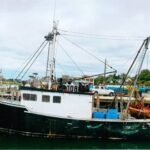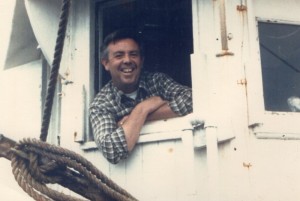China fishing plan in Antarctica alarms scientists
 Scientists studying the Antarctic’s marine life received some unexpected news this month: China plans to vastly increase fishing for Antarctic krill – small crustaceans that are a critical food for the continent’s penguins and other creatures. China currently harvests about 32,000 metric tons of krill annually from Antarctica’s waters, topped by only Norway and South Korea. Under China’s plans, the world’s most populous country would increase those catches 30 to 60 times, harvesting up to 2 million metric tons yearly. Read the rest here 12:18
Scientists studying the Antarctic’s marine life received some unexpected news this month: China plans to vastly increase fishing for Antarctic krill – small crustaceans that are a critical food for the continent’s penguins and other creatures. China currently harvests about 32,000 metric tons of krill annually from Antarctica’s waters, topped by only Norway and South Korea. Under China’s plans, the world’s most populous country would increase those catches 30 to 60 times, harvesting up to 2 million metric tons yearly. Read the rest here 12:18

















































Hey, where are all the save the forage fish champions at Pew/EDF/Oceana on this one, the Antarctic Krill free-for-all?
For years these “conservation” groups have doggedly campaigned to quash the “forage fish” fisheries: East Coast Menhaden and Herring and the West Coast’s sardine fishery, one of the most heavily regulated of our over-regulated domestic fisheries. Oceana saturated the media with marketing slogan type statements such as: “Abundant populations of forage species are critical to a healthy ocean,” said Ben Enticknap, Pacific campaign manager and senior scientist with Oceana. “Oceana commends the Pacific Fishery Management Council for its vision and leadership to protect these forage fish – they are the backbone of the ocean food web.” From Fish News EU:
http://www.fishnewseu.com/index.php?option=com_content&view=a…rticle&id=13702%3Aforage-fish-slip-the-net&catid=46%3Aworld
Actually this whole “forage fish” distinction is nothing but a baseless category, another manufactured crisis from the “anti-fishing” environmental NGO 501(c)(3) crowd.
On Georges Bank, for example, Herring eat Cod eggs. Cod eat clams, crabs, and beer cans. Bass eat lobsters. Dogfish eat Flounder and Fluke and just about everything else in sight. Squid eat small Hake and Hake eat small Squid. So who’s “forage” and who’s “predator”?
A “forage fish” is any fish that a larger fish can get into his/her mouth. The fish that Oceana is calling “forage”, i.e., Menhaden, Herring, Sardines, Anchovy, Squid, and Mackerel, Scup, and Whiting, are most of the time amazingly abundant. But, their populations vary along with everything else in their natural environment, i.e. variations in wind, currents, air and water temperature, food supply, spawning conditions, abundance of a particular predator.
The above mentioned fish are prolific breeders when conditions are right. They are short lived and populations go through boom and bust naturally. These stocks can vary widely and have done so forever; and because of this fact, population statistics can be selectively manipulated by choosing a particularly scarce or abundant year as a reference point to statistically “prove” just about anything. From Saving Seafood.org:.
http://www.savingseafood.org/alerts/providence-journal-analysis-finds-pew-environments-menhaden-claim-mostly-f-2.html
Squid for instance live for approximately one year (some estimate even shorter); but, when conditions are right their eggs cover the bottom and are so thick they’ll plug the net and almost stop the boat. The following year’s spawn might be a fraction of the previous year’s production due to a myriad of environmental factors—the least of which is fishing mortality.
However if ever there was such a thing as a “forage” species it would seem that Krill would fit that category very nicely. Krill seems to be the foundation of an awful lot of sea life. Now, whether that justifies categorizing them as “forage fish” or if “forage fish” is an intelligent distinction from any of the other fish in the sea, doesn’t really matter. The fact is that any great imbalance in the ocean ecosystem will create havoc.
Concerning the Antarctic Krill, there is a free-for-all setting up which consists of major corporate-style, market capitalized fishing companies’ factory size vessels zeroing in on vacuuming shiploads of this fish.
The sensationalistic ENGO campaigns to discredit and dismantle domestic Sardine, Menhaden, and Herring fishing have a manifold function. They get rid of fishermen who are not included in future plans for the industrialization of the Outer Continental Shelf (http://www.boem.gov/five-year-program-2017-2022/). And at the same time the well-publicized NGO villainization of domestic independent fishing operations also creates an effective diversion for the reprehensible activities of huge companies such as Aker Biomarine and Sanford.
Such mega-companies are largely unregulated in the Antarctic and poised to deplete certain resources such as their industrial exploitation of the vital Antarctic Krill. And to add insult to injury, the world renowned Marine Stewardship Council has sanctioned the “sustainability” of this factory vacuum ship operation: “AKER BioMarine’s Antarctic krill fishery has been Marine Stewardship Council (MSC) recertified, which means that its krill oil may continue carrying the council’s ecolabel.”
http://www.fishnewseu.com/index.php? option=com_content&view=article&id=13452:antarctic-krill-fishery-recertified&catid=46:world
So then, where are all the Oceana/Pew/EDF Forage Fish Crusaders? If ever the was essential “forage”, it’s an animal such as Krill. These NGOs are all over the U.S. privately owned fishing vessels; but, when there’s a real threat from one of the “moneyed monster”, mega-corporate, “vertically integrated”, fishing conglomerates they don’t make a peep!
Sort of a selective type of conservation?
Again it’s never been about conservation. It’s all about elimination.
Is my face blue yet?